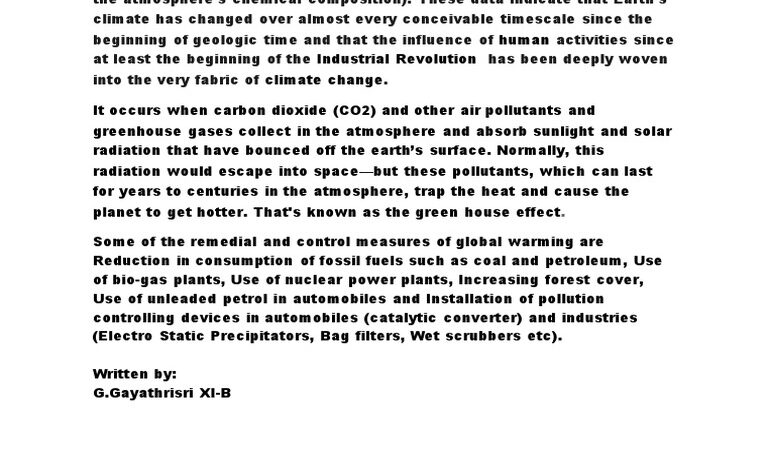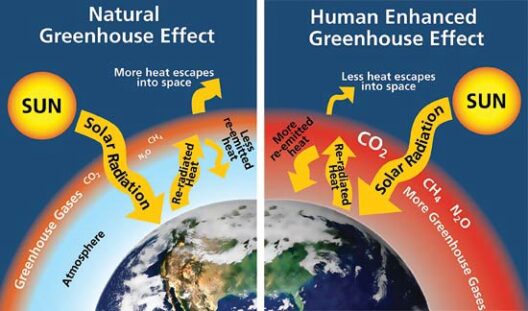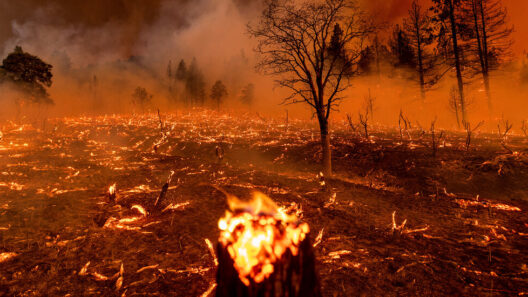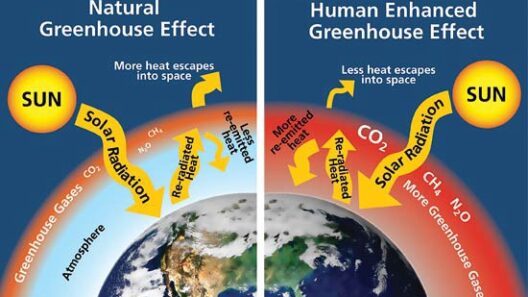Have you ever pondered what the world would be like if the sun decided to shine just a little too brightly every single day? This seemingly playful question unveils the pressing issue of global warming, a serious challenge confronting our planet. Scientists warn that the average temperature of the Earth is rising, primarily due to increased concentrations of greenhouse gases emitted from human activities. This alteration in our climate is not merely an abstract concept; it has tangible impacts on ecosystems, weather patterns, and indeed, our daily lives.
At its core, global warming results from the accumulation of greenhouse gases in the atmosphere. These gases trap heat, causing the planet’s surface temperature to escalate. The major contributors—carbon dioxide, methane, and nitrous oxide—are released through various activities, primarily fossil fuel combustion, deforestation, and industrial processes. This phenomenon is akin to wrapping our planet in a thick blanket; while it keeps us warm, it can also overheat our living space. The dilemma is that as temperatures continue to rise, we will confront challenges that threaten both natural systems and human livelihoods.
One of the most alarming consequences of increasing global temperatures is the melting of ice caps and glaciers. The polar regions are particularly vulnerable, experiencing unprecedented rates of ice loss. As these magnificent ice formations diminish, they contribute to rising sea levels. Coastal cities face the risk of flooding, potentially displacing millions of people who call these regions home. This phenomenon poses a critical question: how will we adapt to a reality where our beloved coastal paradises may become uninhabitable?
Furthermore, the warming of the Earth also exacerbates extreme weather events. Hurricanes, droughts, and heatwaves are intensifying and occurring more frequently. This leads to devastating impacts on agriculture, water supply, and public health. For example, prolonged droughts can lead to crop failures, threatening food security and the livelihood of farmers worldwide. It ignites concern for the future of food production and raises a challenge: how can we cultivate enough food in a climate that is becoming less predictable?
Wildlife, too, faces staggering challenges in the wake of climate change. Many species are struggling to adapt to their shifting environments. Altered habitats disrupt migration patterns and breeding cycles. Some species teeter on the brink of extinction. The loss of biodiversity is not solely an environmental issue; it is intricately linked to human health and well-being. Healthy ecosystems provide essential services, including clean air, water, and fertile soil. What will the world look like if we allow these ecosystems to unravel?
In addressing global warming, we must also consider our energy consumption. The reliance on fossil fuels is a significant driver of greenhouse gas emissions. Transitioning to renewable energy sources, such as wind, solar, and geothermal, is crucial for reducing our carbon footprint. Innovations in technology allow us to harness sustainable energy, providing a viable path forward. However, it begs the question: are we ready to embrace these changes and let go of convenience in exchange for a sustainable future?
Individual actions can play a pivotal role in combating global warming. Simple steps, such as reducing energy consumption, using public transportation, and supporting local farms can collectively lead to significant changes. The challenge lies in mobilizing communities and fostering a culture of sustainability. Citizens must unite in their efforts to reduce waste and advocate for environmentally friendly policies. It is essential to actively engage with local leaders and demand accountability to safeguard our planet.
Education is a powerful tool in raising awareness about global warming. By understanding the science behind climate change, individuals can comprehend the stakes involved. Schools and communities should implement educational programs that emphasize the importance of environmental stewardship. This knowledge can empower the next generation to advocate for policy changes that prioritize sustainability and environmental justice.
The role of government and global cooperation cannot be underestimated. Collective action at the national and international levels is necessary to address global warming effectively. Agreements such as the Paris Accord aim to unite countries in the fight against climate change. Each nation must contribute to this monumental task, setting realistic targets for emission reductions. It poses a challenge: will countries prioritize the planet over short-term economic interests?
In conclusion, global warming is an imminent threat with far-reaching implications. It requires immediate attention and collective action from individuals, communities, governments, and businesses alike. The playful question posed at the beginning reveals a stark reality: the Earth is our shared home, and we are at a critical juncture. As we contemplate the future, we must recognize the urgency of the situation and act diligently to mitigate the effects of climate change. The time for change is now; the responsibility rests on each one of us to ensure a livable planet for generations to come. Are we ready to rise to the challenge?








